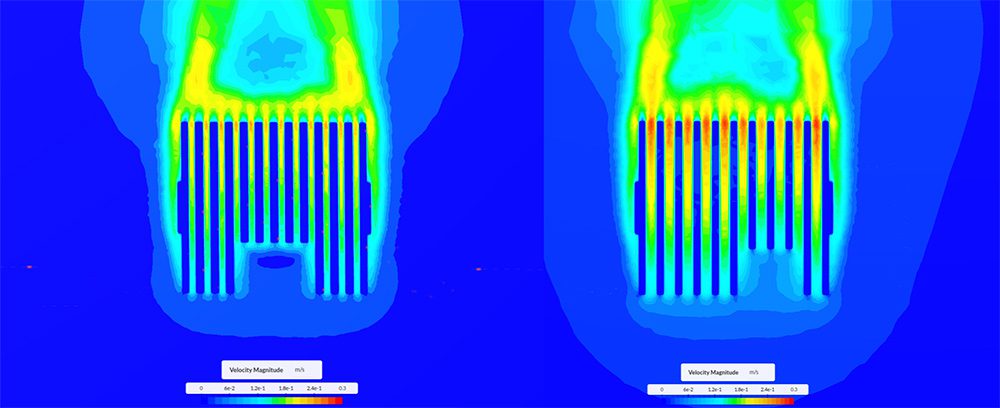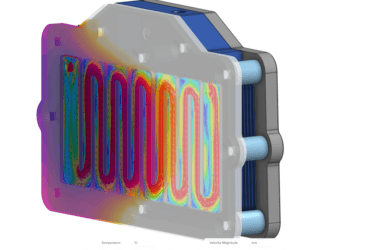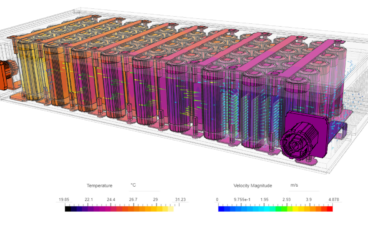Adopting in-house engineering simulation software, instead of hiring external consultants, is a straightforward solution to keep engineering teams competitive. It not only puts money back in your budget and lost time back into your workflows, but it also keeps you and your team in control of your design process; from concept to final product.
With cloud-based simulation, designs can be iterated even faster. You can upload your CAD file, run design iterations/different designs in parallel, and view post-processing results all in your web browser. While competitors are waiting on results and sinking money into multiple prototyping phases, you will be leveraging high computing power to test for the optimal design and sharing your results with collaborators in real-time.
The case studies below represent companies from different industries that had previously hired external consultants for design/project validation but found themselves challenged by unique design criteria or demanding product performance, which led them to bring simulation in-house. The results not only successfully delivered on their challenges but enhanced their iterative design process while cutting costs and putting invaluable time back into the hands of designers.
In-House Simulation for Lighting Equipment
Raycore Lights designs and manufactures LED light fixtures for the world of industrial equipment. In the past, they had hired external consultants to run thermal analyses of products in the design phase. Simulation was crucial to their design process but the cost and time-allocation spent to contract outside help was untenable. The design team required a CAE tool that was cost-effective, easily accessible, highly accurate, and able to deliver results quickly, without the limits of traditional on-premise software. SimScale fit their criteria and was quickly integrated into the workflow.
SimScale’s subscription service/cloud computing approach has allowed us to improve our design process and the end products that we provide to our customers without overextending financially, a big win for us!
Mark Williams, VP Operations and Engineering

With SimScale, Raycore Lights ran five simulations in parallel and tested eight design iterations. They were able to achieve optimal design through an iterative process without the cost of outsourcing or physical prototyping. Read the specifics of their simulation setup and results in the Raycore Lights case study.
In-House Simulation for Thermal Packaging Design
EUROpack specializes in the design of custom-built thermal packaging for both the food and pharmaceutical industries. They were challenged with a special request from a client, which would require a considerably high number of scenarios and iterations to achieve. Previously, EUROpack consulted with an outside thermal analysis specialist, however, the iterative nature of this design project would make hiring a consultant too cost-intensive. SimScale solved this problem by bringing thermal simulation in-house.
SimScale and simulation are essential to our work so that we can have the confidence that our solution will fit our clients’ needs before we commit to tooling that could cost over 100 thousand euros.
Peter Mailund, CEO
For the project covered in their case study, it was essential that EUROpack run multiple transient thermal analyses of different designs, both in winter and summer conditions.
SimScale’s HPC-powered simulation enabled them to run multiple simulations in parallel without any of the upfront costs of legacy desktop CAE software. This meant running multiple different scenarios in half the time-to-results. As their design process relies on performance assessment of previous iterations to inform further optimization, analyzing results in minutes, not weeks, equips EUROpack with a strong competitive advantage. Visit the EUROpack case study for more details on the final design, accelerated by engineering simulation in the cloud.
Engineering Simulation in the Cloud
Both RayCore and EUROpack have leveraged simulation, not only as a powerful tool in their iterative design process but as a collaborative platform that grants efficiency and access unmatched by legacy desktop CAE software. As a cloud-based simulation platform, SimScale facilitates project sharing and live collaboration, helping teams to quickly analyze simulation results and share insights. Bringing cloud-based simulation in-house allows engineering teams to eliminate the pain of large file sharing and limited computing power. SimScale enables cloud collaboration, CAD editing features, and gets teams quickly to the kind of insights needed to realize the value that simulation brings to the engineering design process.
If you’d like to see how cloud-based simulation can optimize your iterative design process, check out our additional resources below:
- What’s the Value of a Cloud-Based Tool for Engineers?
- On-Premises vs. SaaS CAE Simulation: A Comparative Look
- Cloud-Native Applications vs. Non-Native Cloud Offerings


